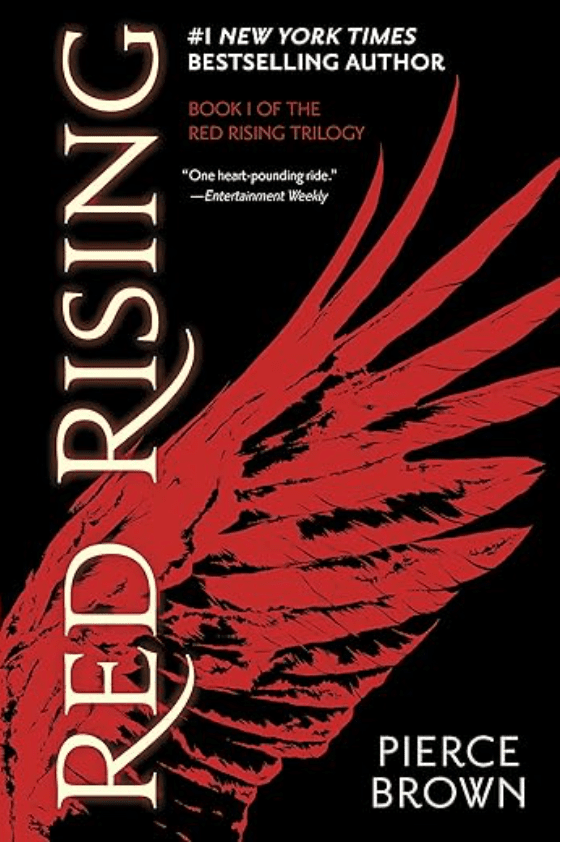
Introduction
“Red Rising” by Pierce Brown has captured the imaginations of readers since its release in 2014, standing out in the crowded genre of young adult science fiction and dystopian literature. The book has gained a substantial following, praised for its intricate world-building and compelling character arcs. Pierce Brown, an American author, has risen to prominence in the literary world, drawing attention to socio-political themes woven into his narrative. This review will delve into the key elements of “Red Rising,” including its plot, character development, writing style, and overall impact on the genre.
Overview of Red Rising
“Red Rising” follows the story of Darrow, a member of the lowly Red caste, who lives in a society structured around a rigid hierarchy dictated by a caste system. Set in a future where Mars has been colonized, the novel opens with Darrow’s life as a miner, toiling underground to extract helium-3—an essential resource for the elite Golds, who enjoy lives of luxury above ground. When tragedy strikes, Darrow is thrust into a revolutionary journey that transforms him from a humble worker into a cunning player in a dangerous game of power and ambition.
The world of “Red Rising” is vividly crafted, showcasing a dystopian future that resonates with contemporary societal issues such as class struggle and injustice. The primary themes of the novel—class struggle, ambition, and betrayal—are crucial in shaping the characters and their motivations.
Character Analysis
Darrow’s character development is at the heart of the novel. Starting as a naïve and oppressed Red, he evolves into a fierce and strategic warrior. His desire for revenge and justice drives the narrative forward as he infiltrates the elite ranks of the Golds to dismantle the oppressive system from within. This transformation invites readers to reflect on themes of identity, loyalty, and the cost of ambition.
Supporting characters enrich the narrative, each representing different facets of the societal hierarchy. Mustang, a Gold with sharp intellect and a complex moral compass, serves as a counterpoint to Darrow’s ambitions. Sevro, Darrow’s fierce friend and ally, adds humor and loyalty, showcasing the importance of friendship amid adversity. The dynamics between these characters explore the interplay of trust and betrayal, reinforcing the novel’s themes.
Writing Style
Pierce Brown employs a gripping first-person narrative that immerses readers in Darrow’s psyche. His writing style is characterized by a blend of lyrical prose and raw emotion, heightening the intensity of pivotal moments. The pacing varies effectively; swift action scenes contrast with slower, introspective passages allowing for character reflection. Brown’s use of vivid imagery paints a compelling picture of the dystopian world, making the stakes feel palpable and immediate.
Comparison with Other Works
“Red Rising” draws on the rich tradition of dystopian literature, inviting comparisons to titles such as “The Hunger Games” by Suzanne Collins and “Ender’s Game” by Orson Scott Card. Like Collins’ work, it features a young protagonist fighting against an oppressive system. However, “Red Rising” distinguishes itself with its unique blend of science fiction elements and classic Greek-inspired themes of tragedy and heroism. Brown’s exploration of complex moral questions regarding leadership and sacrifice sets it apart, offering a deeper exploration of what it means to rebel and seek justice.
Reception and Impact
Critically, “Red Rising” received acclaim for its fast-paced narrative and rich character development. It has garnered multiple awards, including the Goodreads Choice Award for Best Young Adult Fantasy & Science Fiction. Reader reception has been overwhelmingly positive, with a dedicated fanbase rallying around the series, which has expanded to include sequels that continue Darrow’s saga.
The book’s cultural impact is significant, sparking discussions about class disparity and the struggle for equality in a modern context. As dystopian literature continues to evolve, “Red Rising” stands as a notable contribution, influencing both readers and aspiring authors.
Conclusion
“Red Rising” by Pierce Brown is a riveting exploration of ambition, identity, and rebellion set against a backdrop rich with socio-political commentary. Its strengths lie in its complex characters, evocative writing style, and thought-provoking themes. While the novel does exhibit some pacing issues, particularly in its exposition, the overall experience is one that resonates deeply with readers.
For those who enjoy thrilling narratives that challenge societal norms and delve into the human condition, “Red Rising” is a must-read. It appeals to fans of science fiction and dystopian literature alike, inviting them to engage in questions of loyalty, betrayal, and the true cost of power.
In conclusion, the lasting legacy of “Red Rising” heralds a new era for dystopian novels, inspiring further exploration of its themes in literature and beyond. Readers are encouraged to share their thoughts on the book—its impact, themes, and characters—inviting a rich discussion among book lovers.






